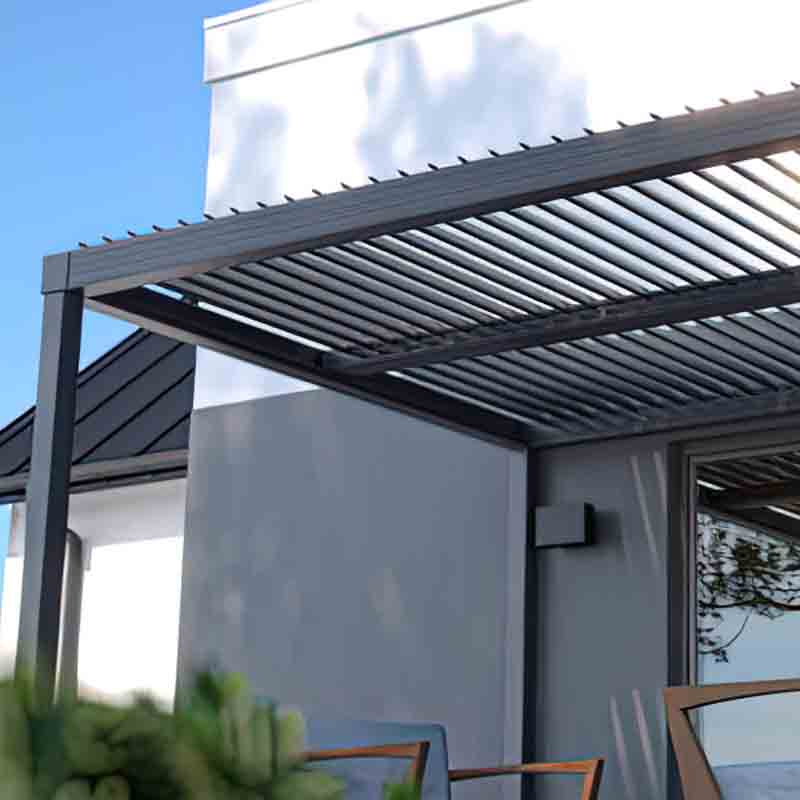The “New Three Types” of China’s Aluminum Processing Industry - Part 1 New energy vehicles

Article Outline
This article first provides a brief introduction to the “new three types” in the aluminum processing industry, namely new energy vehicles, lithium batteries, and solar photovoltaics, highlighting their significance in driving the industry's development. Then, it zooms in on the application of aluminum profiles in new energy vehicles. It elaborates on how aluminum profiles contribute to vehicle lightweighting, enhancing energy efficiency and performance. The challenges in using aluminum profiles and corresponding solutions will also be discussed. Finally, a look into the future trends of aluminum's role in this sector is presented, along with a mention of our company, aluinno.
1. Introduction
The aluminum processing industry in China has been evolving, and the emergence of the “new three types” has brought new vitality. New energy vehicles, lithium batteries, and solar photovoltaics are at the forefront of technological advancements and have a profound impact on aluminum demand. Among them, new energy vehicles are rapidly transforming the automotive landscape, and aluminum profiles play a crucial part in this revolution.
2. The “New Three Types” Overview
2.1 New Energy Vehicles
The global push towards sustainable transportation has led to a booming new energy vehicle market in China. With government incentives and increasing consumer awareness, the production and sales of electric vehicles, hybrid vehicles, etc. have been on a steady rise. These vehicles require advanced materials to meet their performance goals, making aluminum an ideal choice.
2.2 Lithium Batteries
As the power source for new energy vehicles and a key component in energy storage systems, lithium batteries have seen explosive growth. Aluminum is involved in various aspects of lithium battery production, from the electrodes to the casing, due to its excellent conductivity and chemical stability.
2.3 Solar Photovoltaics
The solar photovoltaic industry is harnessing the sun's energy to generate electricity on a large scale. In China, it has expanded rapidly, and aluminum profiles are widely used in solar panel frames and mounting structures, thanks to their durability and corrosion resistance.
3. Aluminum Profile Applications in New Energy Vehicles
3.1 Vehicle Body Structure
Aluminum profiles are increasingly being used in the body frames of new energy vehicles. Their lightweight nature helps reduce the overall vehicle weight significantly. For example, compared to traditional steel bodies, an all-aluminum body can shave off hundreds of kilograms, directly translating to increased energy efficiency and longer driving ranges. This is especially critical for electric vehicles where battery range is a top concern.
3.2 Battery Enclosures
The battery is the heart of a new energy vehicle, and protecting it is of utmost importance. Aluminum profiles offer a perfect solution for battery enclosures. They provide strong mechanical protection against impacts and vibrations while also being lightweight. Additionally, aluminum's good thermal conductivity aids in dissipating heat generated during battery operation, ensuring the battery operates within a safe temperature range.
3.3 Chassis Components
In the chassis, aluminum profiles are used to fabricate components like suspension arms and subframes. The high strength-to-weight ratio of aluminum allows for better handling and ride comfort. It also reduces the unsprung mass, enhancing the vehicle's dynamic performance. For instance, a lighter chassis can respond more quickly to steering inputs and absorb road irregularities more effectively.
3.4 Interior Applications
Even inside the vehicle, aluminum profiles find their use. They can be seen in the design of seat frames, door trims, and dashboard structures. Besides adding a modern and sleek aesthetic appeal, they contribute to the overall weight reduction, which in turn helps with energy consumption.
4. Challenges and Solutions in Using Aluminum Profiles
4.1 Manufacturing Difficulties
One of the main challenges is the complexity of processing aluminum profiles. Aluminum has different mechanical properties compared to traditional materials like steel, which requires specialized manufacturing techniques. For example, welding aluminum requires precise control of parameters to avoid defects. However, the industry has been developing innovative solutions, such as advanced laser welding and friction stir welding technologies, to overcome these difficulties.
4.2 Cost Considerations
The initial cost of aluminum profiles can be higher than some alternatives. This is due to factors like the cost of raw materials and the more elaborate manufacturing processes. To address this, manufacturers are working on optimizing production processes to increase efficiency and reduce waste. Moreover, as the scale of production increases, economies of scale are expected to bring down the cost per unit, making aluminum profiles more cost-competitive in the long run.
5. Future Trends
5.1 Technological Advancements
The future will see continuous research and development in aluminum alloys tailored specifically for new energy vehicles. These new alloys will likely have even better strength, ductility, and corrosion resistance properties. Additionally, advanced manufacturing technologies like 3D printing could revolutionize the way aluminum profiles are fabricated, allowing for more complex and optimized designs.
5.2 Market Expansion
With the continued growth of the new energy vehicle market globally, the demand for aluminum profiles will soar. New applications and areas of use will also emerge. For example, as autonomous vehicles become more prevalent, the design requirements for vehicle structures will change, and aluminum profiles will need to adapt to meet these new demands.
6. Conclusion
In conclusion, the development of new energy vehicles has opened up vast opportunities for the application of aluminum profiles in the aluminum processing industry. Despite the challenges, the advantages far outweigh them. As we look ahead, continuous innovation and improvement will ensure that aluminum remains a key material in powering the future of transportation. Our company, aluinno, is committed to staying at the forefront of this trend, providing high-quality aluminum products and contributing to the growth of both the aluminum processing industry and the new energy vehicle sector.


 En
En



 Location:
Location:
















